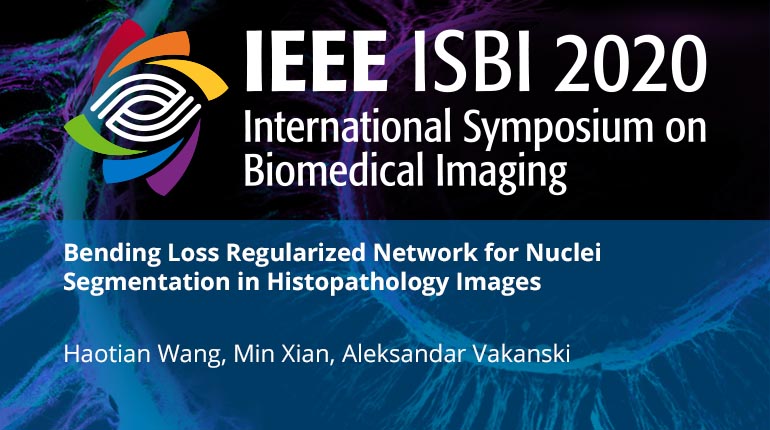
Already purchased this program?
Login to View
This video program is a part of the Premium package:
Bending Loss Regularized Network for Nuclei Segmentation in Histopathology Images
- IEEE MemberUS $11.00
- Society MemberUS $0.00
- IEEE Student MemberUS $11.00
- Non-IEEE MemberUS $15.00
Bending Loss Regularized Network for Nuclei Segmentation in Histopathology Images
Separating overlapped nuclei is a major challenge in histopathology image analysis. Recently published approaches have achieved promising overall performance on public datasets; however, their performance in segmenting over-lapped nuclei are limited. To address the issue, we propose the bending loss regularized network for nuclei segmentation. The proposed bending loss defines high penalties to contour points with large curvatures, and applies small pen-alties to contour points with small curvature. Minimizing the bending loss can avoid generating contours that encompass multiple nuclei. The proposed approach is validated on the MoNuSeg dataset using five quantitative metrics. It outperforms six state-of-the-art approaches on the following metrics: Aggregate Jaccard Index, Dice, Recognition Quality, and Panoptic Quality.
Separating overlapped nuclei is a major challenge in histopathology image analysis. Recently published approaches have achieved promising overall performance on public datasets; however, their performance in segmenting over-lapped nuclei are limited. To address the issue, we propose the bending loss regularized network for nuclei segmentation. The proposed bending loss defines high penalties to contour points with large curvatures, and applies small pen-alties to contour points with small curvature. Minimizing the bending loss can avoid generating contours that encompass multiple nuclei. The proposed approach is validated on the MoNuSeg dataset using five quantitative metrics. It outperforms six state-of-the-art approaches on the following metrics: Aggregate Jaccard Index, Dice, Recognition Quality, and Panoptic Quality.
 Cart
Cart Create Account
Create Account Sign In
Sign In





